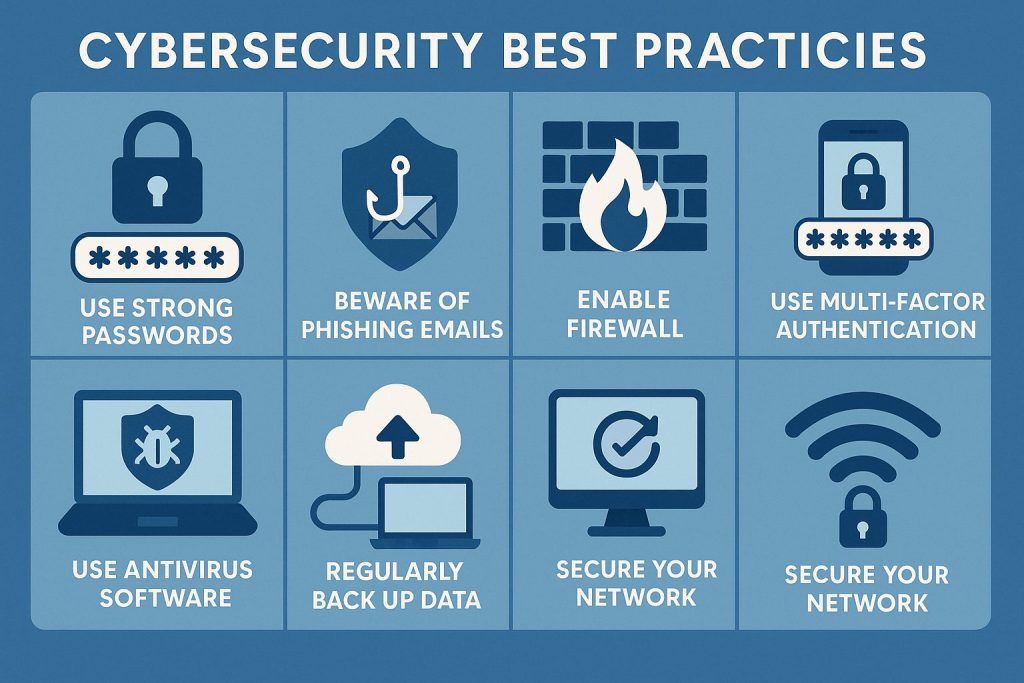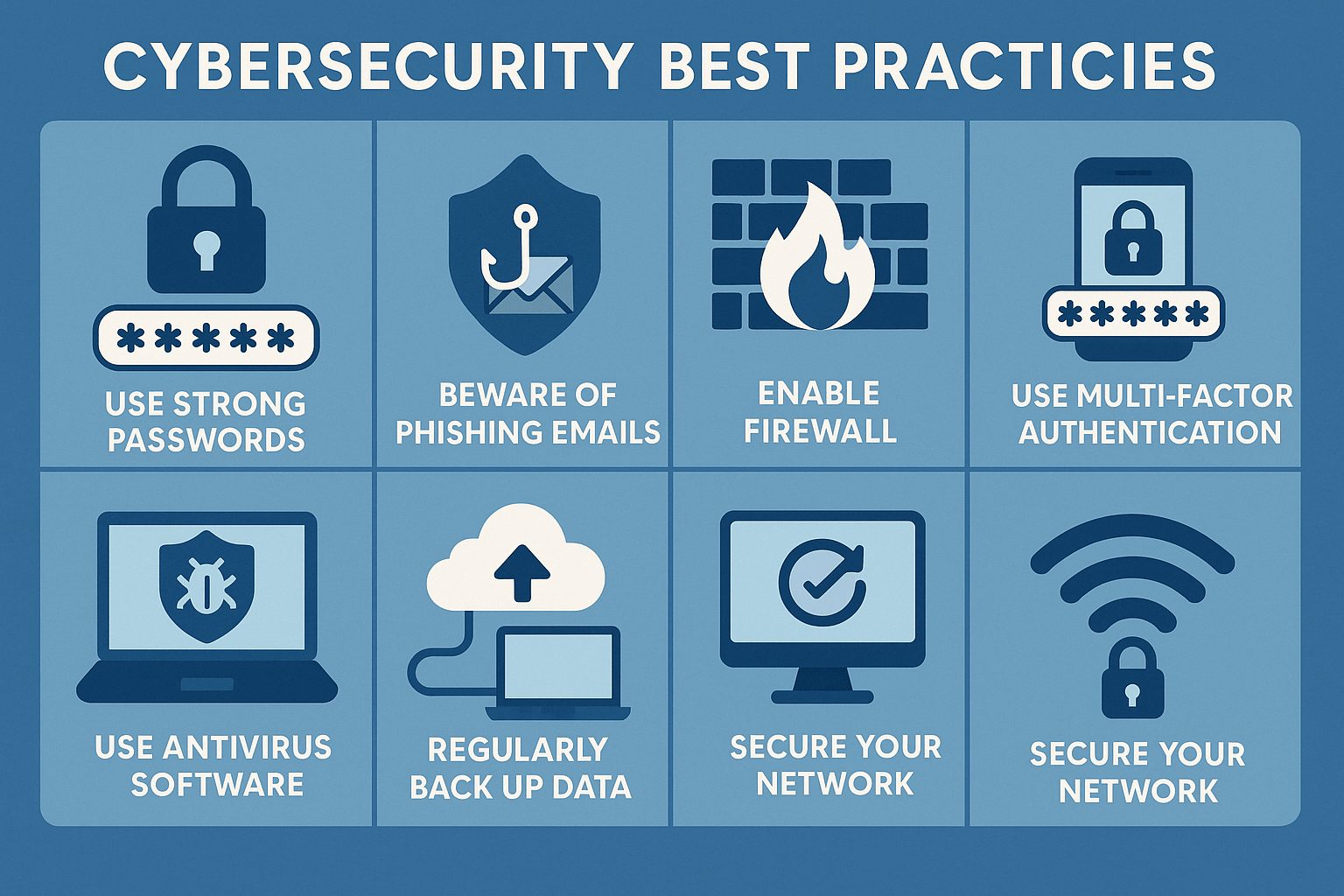
The rise of remote work has transformed how companies operate, improve productivity, and connect talent across global teams. However, this shift also increases exposure to cyber threats that target distributed workforces. Cybersecurity for remote teams is no longer optional—it is essential. Businesses must implement strong security rules and promote safe online behaviors to protect sensitive data and maintain trust. The following sections explore the best cybersecurity practices to help remote teams stay safe and secure in an ever-evolving digital environment.
Protect Remote Teams with Strong Cybersecurity Habits
Remote work introduces challenges like unsecured networks, shared devices, and inconsistent use of security tools. The first step toward strong cybersecurity hygiene is ensuring that every team member uses a reliable antivirus program and keeps their devices up to date. Regular software patching closes vulnerabilities and helps prevent malware or ransomware attacks. Implementing a strong password policy and enabling two-factor authentication across all accounts adds an extra layer of protection against unauthorized access.
Employees should avoid using public Wi-Fi for work activities, as these networks are often unencrypted and easy targets for hackers. If a remote worker must connect through a public network, a virtual private network (VPN) should always be used to encrypt data transmissions. VPNs create a secure tunnel between the user’s device and the company’s network, significantly reducing the risk of data interception. Teaching employees how to spot phishing emails and other social engineering attempts is also crucial to strengthen their security awareness.
Cybersecurity training should be a continuous process rather than a one-time event. Remote workers should receive periodic reminders through workshops, short training videos, or email newsletters that reinforce best practices. Encouraging employees to report suspicious activities, such as unexpected login requests or unfamiliar attachments, creates an open communication channel for security concerns. A proactive approach ensures potential threats are identified and resolved before they escalate into major security incidents.
In addition, endpoint security software plays an important role in tracking and securing all company devices remotely. Modern endpoint solutions can monitor device compliance, apply security patches automatically, and send alerts about risky behavior. These measures establish a stable environment for remote workflows and reduce the overall attack surface of the organization. The goal is to make cybersecurity a simple, daily habit for every team member, not just an IT responsibility.
Secure Data Sharing and Access for Remote Workers
Remote teams rely heavily on cloud-based platforms, collaboration tools, and file-sharing systems. While these tools improve productivity, they also present risks if data sharing is not properly managed. Start by adopting platforms that use end-to-end encryption to protect files and messages. Businesses should ensure strict access controls through role-based permissions, allowing each team member to access only the information necessary for their role. This minimizes the chance of data leaks and insider threats.
Additionally, organizations should use secure file-sharing methods instead of personal email accounts or public cloud drives. Implementing single sign-on (SSO) solutions can help remote employees manage credentials securely while simplifying the login process. Regularly auditing user access ensures that former employees or temporary contractors no longer have entry to sensitive systems. Strong encryption, combined with access control, is one of the most effective defenses against unauthorized data exposure.
To safeguard communications, consider deploying secure collaboration platforms that support encrypted video meetings and protected chat features. Employees should verify URLs and app authenticity before downloading any collaboration software. Many cyber attackers craft fake versions of popular tools to trick users into revealing credentials. Clear company guidelines should define acceptable platforms and explain the corporate data handling process.
Finally, remote teams must back up all critical data frequently using a combination of cloud and local backups. Regular backups protect the organization from losing important files in case of a ransomware attack or hardware failure. Automated backup systems reduce the burden on employees and ensure data is recoverable within minutes. Implementing data redundancy and recovery testing can make a company resilient against any kind of digital disruption, preserving both operations and reputation.
Build a Culture of Cyber Awareness in Remote Teams
Cybersecurity is most effective when it becomes part of the company culture. Remote teams need to understand that protecting information is a shared responsibility, not merely an IT issue. Leaders should communicate the importance of data protection during team meetings and integrate it into the onboarding process. A team that understands the risks and how to respond to incidents is more likely to prevent security failures and act quickly in emergencies.
Continuous learning is key to building cyber awareness. Offer short training sessions on topics such as identifying phishing emails, avoiding unsafe websites, and recognizing social engineering tactics. Gamifying learning experiences—by offering small rewards for participation or quizzes—can motivate employees to engage with cybersecurity lessons regularly. Education helps create a security-driven mindset where awareness becomes second nature.
It is equally important to encourage open communication about mistakes or suspicious activity. Employees should feel safe reporting potential problems without fear of blame. Quick reporting allows security teams to investigate and contain threats faster. Transparent communication also builds collaboration and helps remote staff stay alert to new types of attacks circulating in the digital space.
Finally, companies should include cybersecurity performance in regular evaluations, acknowledging staff who consistently follow safe practices. Recognizing efforts reinforces good digital habits and motivates others to follow suit. Building a culture of cyber awareness transforms security from a compliance requirement into a shared company value. The ultimate aim is to have every remote employee think security-first in their everyday digital workflows.
Cybersecurity for remote teams is vital in an age when digital operations span across various locations and networks. By developing strong cybersecurity habits, securing data access, and building a culture of awareness, organizations can drastically reduce their exposure to online threats. Each remote worker plays an essential role in maintaining the company’s digital integrity. When technology, policies, and awareness work together, remote teams can prosper securely, no matter where they work from.

Leave a Reply